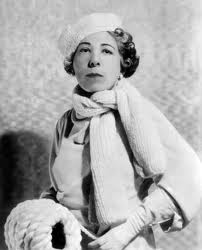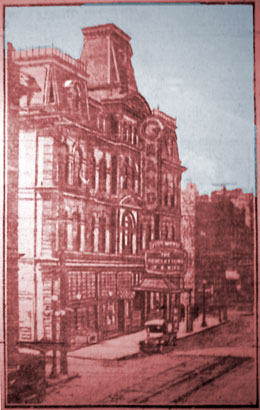 Port Hope, an attractive lakefront town an hour’s drive east of Toronto, has much to offer travellers who stray (either by accident or design) from nearby Highway 401. With a picturesque main street known for its antique shops, the town of roughly 12,000 is a Mecca for antique shoppers. But there’s also an abundance of heritage sites to be impressed by, including the 19th-century church where former Governor-General Vincent Massey is buried and a surprising inventory of “century” homes.
Port Hope, an attractive lakefront town an hour’s drive east of Toronto, has much to offer travellers who stray (either by accident or design) from nearby Highway 401. With a picturesque main street known for its antique shops, the town of roughly 12,000 is a Mecca for antique shoppers. But there’s also an abundance of heritage sites to be impressed by, including the 19th-century church where former Governor-General Vincent Massey is buried and a surprising inventory of “century” homes.
A hilly town with extensive ravines, Port Hope incorporated as a city in 1834 after briefly considering and rejecting the name Toronto. Like “Muddy York” and nearby Cobourg, the town had high hopes of making something of itself. Indeed, from roughly the 1840s through the 1870s, its busy port and important rail connections to Lindsay, Peterborough and the north heralded an era of grandeur and promise.
Attracted by the area’s cooler climate in summer, numerous wealthy American families from places like Rochester and Pittsburgh built impressive summer homes here, sometimes staffing them with dozens of servants. The town was regularly serviced by ferries across the lake from Rochester and other port cities. Port Hope was in its glory throughout the 1850s, a decade of economic optimism, and into the 1860s. But the timber trade collapsed in the 1870s, severely curtailing the shipping and railway industries, and the town’s moment in the sun was over.
 Today Port Hope is filled with many architectural remembrances of its storied past. Unsuspecting first-time visitors who chance upon the main street, Walton Street, may experience a tiny frisson of pleasure upon laying eyes upon this curvaceous, well-preserved Victorian boulevard. The residential sidestreets likewise present a pleasingly old-fashioned and somewhat sleepy vision of civic orderliness, right down to the white picket fences, lovingly-arranged flower gardens and cats napping on front porches.
Today Port Hope is filled with many architectural remembrances of its storied past. Unsuspecting first-time visitors who chance upon the main street, Walton Street, may experience a tiny frisson of pleasure upon laying eyes upon this curvaceous, well-preserved Victorian boulevard. The residential sidestreets likewise present a pleasingly old-fashioned and somewhat sleepy vision of civic orderliness, right down to the white picket fences, lovingly-arranged flower gardens and cats napping on front porches.
There’s a great deal of pride evident in this community, which has undergone a renaissance of heritage restorations since the late 1960s. Port Hope is “an amiable place,” says internationally-renowned writer Farley Mowat who lives with his wife Claire Mowat in a prim 1840s house near the downtown. “And amiability in a community implies a kind of acceptance, a kind of easiness, a kind of spiritual comfort. This town has those qualities.”
If you’re in Port Hope before the Annual House Tour on Oct. 3 (phone 905-885-9853 for tickets), a walk or drive through town will turn up many heritage gems. One of the most notable is The Bluestone (21 Dorset St. E.) an 1830s mansion that has been called Port Hope’s “most splendid house.” St. Mark’s Church (51 King St.), erected 1822, is one of the earliest frame churches still in use in Ontario. Other noteworthy 19th-century structures include several neoclassical buildings credited to the Rochester architect Merwin Austin, such as the St. Lawrence Hotel (87-97 Walton St.) and the Town Hall (56 Queen St.), distinguished by its elegant cupola.
One of the most interesting early structures in Port Hope is the 2-1/2-storey post-and-beam house by the lake. (168 King St.) The building, which was once known as the Seaman’s Inn and presently functions as a bed-and-breakfast hotel called Canada House, was featured in Jane Urquhart’s 1993 novel Away.
For years, 1822 was attributed as the year of its construction. But when proprietors Bogdan and Sue Malyczewsky started renovating after acquiring the property about 1976, they found evidence in the construction method and type of nails used that the house was built considerably earlier. Through persistent research over many years, they discovered that the Hydrographic Archives in Taunton, England, held a sketch of the town from the water, drawn about 1815, with the house clearly visible. Searching through local archives, they discovered the original owner of the house was actually Elias Smith, the town’s founder, whose journals indicate a construction date for the house of about 1801.
The Malyczewskys uncovered many relics during the course of renovations. Behind the mantle of an old fireplace, for instance, they found an 1840 money order for $1,000 drawn on an American bank. According to Mr. Malyczewsky, the note would have had a current value of US $250,000.
Although possessing the low ceilings and small-sized rooms that mark the property as authentic to its period, Canada House would be a worthwhile place to stay for anyone with an interest in local history or the correct methods of renovating a heritage home. The walls are decorated with historic paraphernalia, including many archival documents and an 1837 color lithograph drawing by W. H. Bartlett showing Port Hope (and the house) from the water. For information, phone 905-885-6017.
Visitors to the area interested in an overnight stay may choose from numerous other historic dwellings. The Hillcrest Bed and Breakfast & Spa (905-885-7367), whose exterior is framed by Corinthian pillars, was built in the 1870s as the summer home of a wealthy Pittsburgh family, and features lovely grounds and good views of Lake Ontario. A considerably smaller residence but equally quaint, The Butternut Inn (905-885-4318 or www.butternutinn.com) was the former home of the Great Farini, a famous 19th-century aerialist known for his daring crossings above Niagara Falls.
With such a cornucopia of 19th-century architectural riches, it defies expectation that Port Hope also possesses at least one significant 20th-century architectural treasure. It is the Capitol Theatre, a 1930s “atmospheric” movie theatre at Queen and Walton Streets whose neatly-restored interior resembles the courtyard of a Norman castle. Images of clouds and stars are projected onto the ceiling to evoke the illusion that partrons are seated outdoors.
For a full and excellent description of Port Hope’s many brick-and-mortar treasures, consult Going to Town: Architectural Walking Tours in Southern Ontario, by Katherine Ashenburg (Macfarlane Walter & Ross). ♦
© 1998






